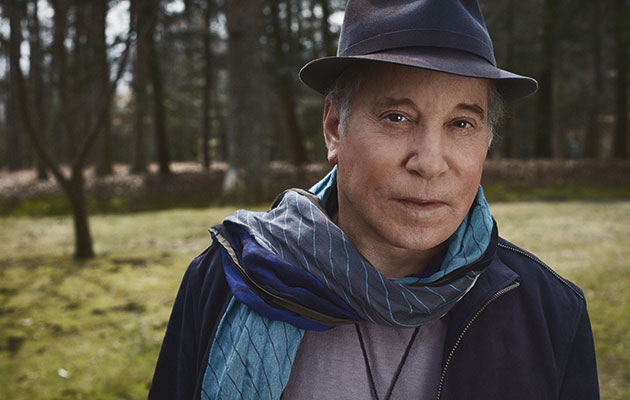Talking of record producers, you’re back with Roy Halee on this album. Do you remember the first time you worked together?
He did the audition tape for Simon & Garfunkel for Columbia and our first album. What do I remember about doing that audition tape? Just how nervous we were, hoping that we would be signed. We were quite proficient by that point. We’d recorded when we were kids. We did a couple of solo records. I used to do demos for lots of people. Instead of working as a waiter or something like that, I would do demos. Burt Bacharach. Carole King and I used to do demos for other people. Anybody. I think my fee was $50 for an hour. So if I could do three demos a week, that was all the money I needed. I was living at home, so I didn’t have to pay the rent. Buy gas for my car, go out on a date, buy whatever clothes I wanted. Meanwhile, I learned how to use a microphone, overdub. Basically, how to record.
Roy was with you on the first solo album, too.
Yeah, Phil [Ramone] did a bunch of the first one and so did Roy. Roy left to go and do Artie’s solo albums. The three great engineers at the time were Phil Ramone, Tom Dowd who was down in Miami and Roy Halee, who worked exclusively for Columbia. After Simon & Garfunkel broke up, there was a competition for who was going to get Roy. After my first solo album, Clive Davis said, “Artie gets him.” So I went to Phil. Phil made There Goes Rhymin’ Simon, Still Crazy After All These Years, One Trick Pony.
How do you view that run of albums now?
Good. They’re good albums. There Goes Rhymin’ Simon was a very happy album, a joyful album. It was done with the Muscle Shoals rhythm section. That was great, to go down to Muscle Shoals and work with those guys, they were fantastic. I brought Revered Claude Jeter with me, who sang with the Swan Silvertones, who were my favourite gospel quartet. Part of the inspiration for “Bridge Over Troubled Water” came from that quartet. We drove from the airport down to Muscle Shoals, it was a two or three hours drive, and he’d tell me what it was like to tour in the South as a gospel quartet in the late 40s and early ‘50s.
“American Tune” is one of the great songs from that period.
“American Tune” was done by an English producer. Paul Samwell-Smith. The melody is pre-Bach, but Bach took it but made the glorious, famous piece that I learned it from. I had enough nerve to go and write a bridge for that…
What was the inspiration for the lyrics?
Nixon won.
That’s it?
Yeah, that’s it. But it’s interesting that those songs have lasted. I’m not bragging about it. I find it pretty amazing. Bernie Sanders used “America” for his first political ad, and it was a big hit – as an ad, I mean. He won the Iowa caucus. I was glad to give it to him, because I thought he was a real stand-up, tell-the-truth guy. What I found personally interesting and pleasing, even flattering, was that a song that old would still have that emotional effect 40 years later. Same with “Sound Of Silence”, which is older. I was 21 when I wrote it. Same with “Boy In The Bubble”, which is quoted in today’s Wall Street Journal.
Why do you think that is?
I guess for some reason, those songs didn’t become dated and corny and nostalgic.


